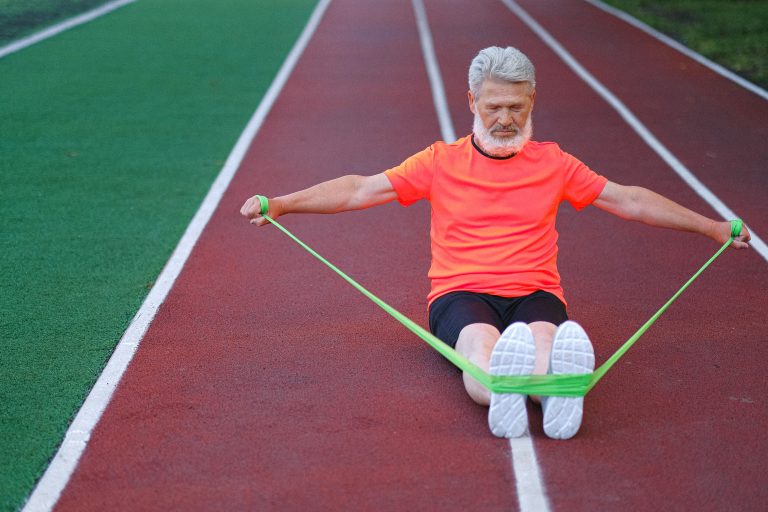To begin, there are two main classifications of physical activity – Aerobic and anaerobic:
- Aerobic exercise is the fancy name for cardiovascular training (hence the nickname cardio) that increases one’s heart rate above average and includes activities such as walking, biking, running, and swimming.
- On the other hand, anaerobic exercise involves physical activity for a short period at maximum effort, seen in high-intensity interval training (HIIT), resistance training and sprints. More specifically, this exercise does not use oxygen as its primary energy source (as aerobic exercise does). Instead, it uses other forms of stored energy like breaking down glucose for fuel.
Both types of exercise are beneficial in their own ways depending on your fitness or health goals. Still, the impacts that each may have on the body should always be considered before beginning a fitness regime.
Exercise and Diabetes
According to Diabetes Canada, it is recommended that those living with diabetes participate in both kinds of exercise. They recommend a minimum of 150 minutes of aerobic exercise and two to three resistance exercise sessions per week (or another form of anaerobic activity). The likelihood of cardiovascular disease-related mortality in people with diabetes has been demonstrated to decrease when regular physical activity is intermixed with cardio training.
Exercise and Type I Diabetes
For someone without diabetes, circulating blood glucose levels are usually kept within a narrow range during all forms of exercise. Insulin and glucagon are the hormones responsible for moderating glucose levels in the blood and function in a cyclic fashion. When blood sugar levels rise, the pancreas secretes insulin to help the body store glucose. When blood glucose levels fall, the pancreas releases glucagon which signals the liver to begin converting stored glucose back into energy. While exercising, muscle cells can consume up to 50x more glucose than at baseline conditions. In response, the pancreas secretes less insulin and more glucagon to help your liver release more glucose, making up for the amount being used. This drop-in insulin release is a characteristic specific to aerobic activity thought to be primarily due to the length of time spent at a high intensity.
When considering a person with type I diabetes, it’s typical to see a dramatic fall in blood glucose levels during anaerobic activity, precisely because the body cannot decrease the level of circulating insulin. Since insulin is responsible for glucose uptake in muscle cells to function as energy and the body is not degrading it fast enough, all available glucose is taken into the cell and not replenished. This can result in hypoglycemia developing a short time after beginning any form of high-intensity cardio workouts. Hypoglycemia can present in many ways, such as shakiness, dizziness, sweating, hunger, and loss of consciousness, making it very dangerous if not considered before exercising.
Although resistance training still elevates the heart rate and is a type of activity, it is classified as anaerobic exercise. Investigations into the impact on glycemic control that it has on individuals with type 1 diabetes is unclear. But we do know that resistance training typically lessens the chance of developing hypoglycemia, especially when resistance training is done before aerobic exercise.
Exercise can result in high blood sugars as well, known as hyperglycemia. High intensity or competitive activity can raise blood sugars due to the release of stress hormones. If your blood sugar is high before exercise or if you have ketones, consider monitoring your blood sugar more often and staying hydrated. You may need to delay exercise and take measures to bring your blood sugar down. Keeping a record of you blood sugars before, during, and after activity can help you understand how exercise impacts your glucose levels. You may need to adjust your insulin dose, eat extra carbohydrates, or both. It’s best to discuss this with your healthcare provider.
The 360Care Team
If you are struggling to create a workout plan or exercise regime, reach out to your physician or get in touch with your diabetes educator. Talk to them about what steps you need to take to ensure that you can optimize your workout while avoiding both high and low blood sugars. Here at 360Care, we have a team of health care professionals ready to support you at every step of your fitness journey and can help put you into contact with the right people.
Remember, working out doesn’t have to be hard. We are here to help! Don’t wait until tomorrow and reach out to begin the process today.
References:
Colberg, Sheri R., et al. “Physical Activity/Exercise And Diabetes: A Position Statement of the American Diabetes Association.” Diabetes Care, vol. 39, no. 11, 25 Nov. 2016, pp. 2065–2079., doi:10.2337/dc16-1728.
Diabetes Canada Clinical Practice Guidelines Expert Committee. Diabetes Canada 2018 Clinical Practice Guidelines for the Prevention and Management of Diabetes in Canada. Can J Diabetes. 2018;42(Suppl 1):S1-S325.
Eves, Neil D., and Ronald C. Plotnikoff. “Resistance Training and Type 2 Diabetes: Considerations for Implementation at the Population Level.” Diabetes Care, vol. 29, no. 8, 2006, pp. 1933–1941., doi:10.2337/dc05-1981.
Riddell, Michael C, et al. “Exercise Management in Type 1 DIABETES: A Consensus Statement.” The Lancet Diabetes & Endocrinology, vol. 5, no. 5, 23 Jan. 2017, pp. 377–390., doi:10.1016/s2213-8587(17)30014-1.
Shahgholian, N., KarimiFard, O., & Shahidi, S. (2015). Effects of aerobic exercise on blood glucose in continuous ambulatory peritoneal dialysis patients. Iranian journal of nursing and midwifery research, 20(2), 165–170.
Vieira, Ginger. “Diabetes Risk and Weight Lifting.” Healthline, Healthline Media, 12 Mar. 2019, www.healthline.com/health-news/weight-training-can-help-people-with-type-2-diabetes.
Way, Kimberley L., et al. “The Effect of Regular Exercise on Insulin Sensitivity in Type 2 Diabetes MELLITUS: A Systematic Review and Meta-Analysis.” Diabetes & Metabolism Journal, vol. 40, no. 4, 2 Aug. 2016, pp. 253–271., doi:10.4093/dmj.2016.40.4.253.















